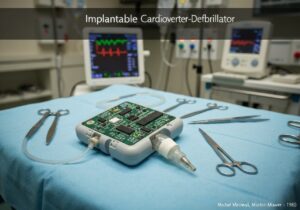Medir la respuesta fisiológica de un usuario a un producto o experiencia.
- Metodologías: Ingeniería, Calidad
Control de la frecuencia cardiaca

Control de la frecuencia cardiaca
- Experiencia del cliente, Diseño centrado en el ser humano, Interacción persona-computadora, Pruebas de usabilidad, Experiencia de usuario (UX), Interfaz de usuario (UI), Pruebas de usuario
Objetivo:
Cómo se utiliza:
- In the context of usability testing, heart rate monitoring is used to measure a user's stress and excitement levels while interacting with a product. This can provide insights into their emotional response and help to identify areas of frustration or delight.
Ventajas
- Provides objective data on a user's emotional response; Can identify issues that users may not articulate.
Contras
- Can be intrusive and may affect the user's behavior; The data can be difficult to interpret.
Categorías:
- Ergonomía, Diseño de producto
Ideal para:
- Evaluating the emotional impact of a new video game or a stressful checkout process.
Heart rate monitoring in usability testing finds its applications across a range of industries, including gaming, e-commerce, and healthcare, where emotional reactions can significantly influence user experience. In the gaming industry, developers utilize this methodology during beta testing by analyzing players’ heart rate fluctuations to understand moments of peak engagement and potential frustration during gameplay, enabling them to adjust difficulty levels or narrative pacing accordingly. Similarly, in e-commerce platforms, monitoring heart rates during checkout processes allows designers to pinpoint points of anxiety that may lead to cart abandonment, thus maximizing conversion rates. In the healthcare context, heart rate monitoring can be applied when testing patient management systems, where the emotional stress experienced by users (medical staff or patients) can directly impact their satisfaction and compliance. This method can be initiated by user experience researchers, product managers, or designers who seek to obtain objective data to complement qualitative feedback gathered during traditional usability testing. Participants can include target users from varying demographics to capture a comprehensive emotional response across different segments, which can provide a well-rounded understanding of user interaction and satisfaction. The collected data can be paired with follow-up interviews or surveys, creating a robust evaluative process that transcends subjective feedback alone and leads to more centrado en el usuario design refinements.
Pasos clave de esta metodología
- Identify the task or interaction the user will perform.
- Measure baseline heart rate prior to the task to establish a control.
- Monitor heart rate continuously during the user interaction.
- Identify peaks and troughs in heart rate data to correlate with user actions.
- Analyze heart rate data alongside qualitative feedback from participants.
- Compare emotional responses across different user interactions or test conditions.
Consejos profesionales
- Integrate heart rate data with qualitative feedback to uncover discrepancies between physical responses and user perceptions.
- Utilize time-segmented analysis of heart rate spikes to correlate specific design elements or interactions with emotional responses.
- Combine heart rate variability measurements with other biometric signals (e.g., skin conductance) for a holistic view of user emotion during interactions.
Leer y comparar varias metodologías, recomendamos el
> Amplio repositorio de metodologías <
junto con otras más de 400 metodologías.
Sus comentarios sobre esta metodología o información adicional son bienvenidos en la dirección sección de comentarios ↓ , así como cualquier idea o enlace relacionado con la ingeniería.
Contexto histórico
1965
1970
1980
1980
1960
1969
1976-05-28
1980
1990
(si se desconoce la fecha o no es relevante, por ejemplo "mecánica de fluidos", se ofrece una estimación redondeada de su notable aparición)









Publicaciones relacionadas
Gestión de operaciones de fabricación (MOM)
Sistema de Ejecución de Fabricación (MES)
Plan de control de la fabricación
Pruebas manuales
Tablas de evaluación de la manipulación manual (MAC)
ManTRA (Herramienta de evaluación de riesgos en las tareas manuales)